The conclusion of a project started in 2020
The Tokyo Toilet Project started in 2020 with the aim of dispelling the misconceptions surrounding public toilets. Partaking in the initiative are a total of 17 public toilets in the Shibuya district that were in utmost need of revamping. The facilities were transformed by 16 creative pioneers, primarily those belonging to the Japanese architecture and design scene.
Here are the last 4 toilets that complete the design project.
Sasazuka Greenway
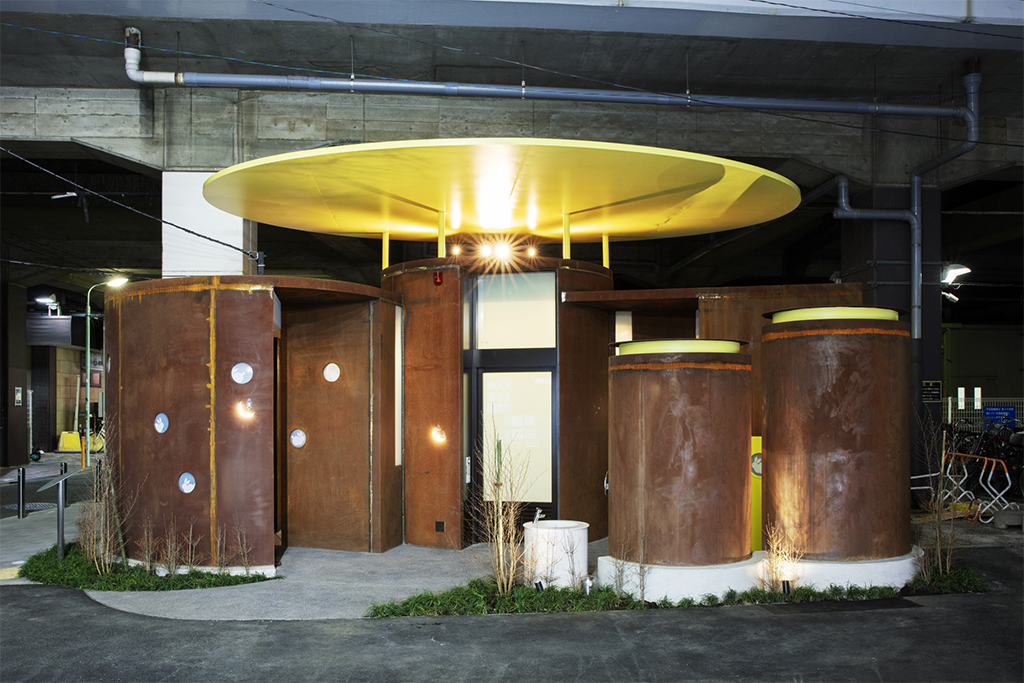
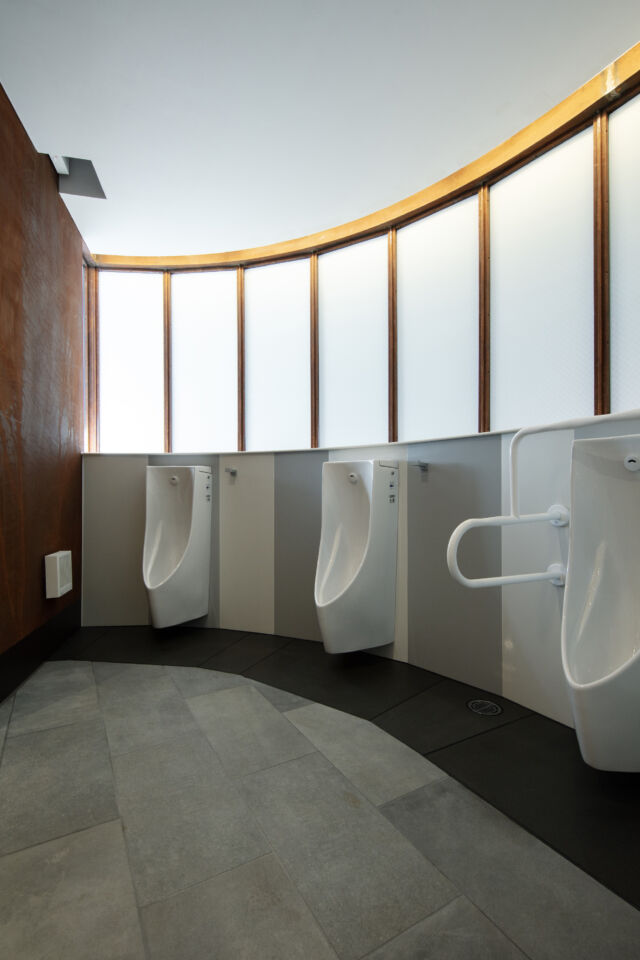
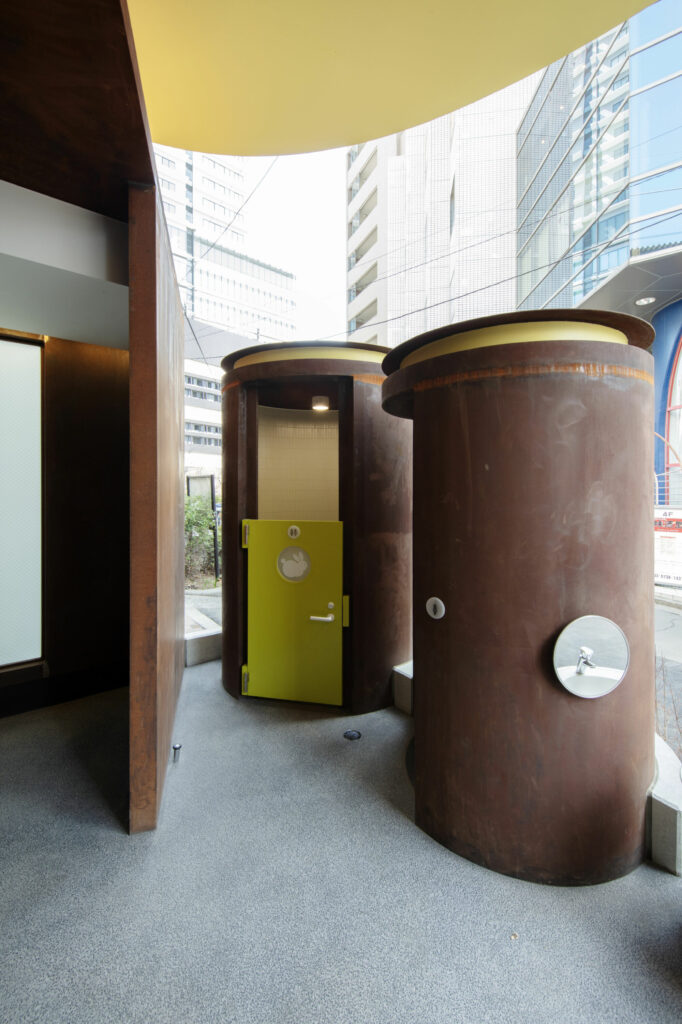
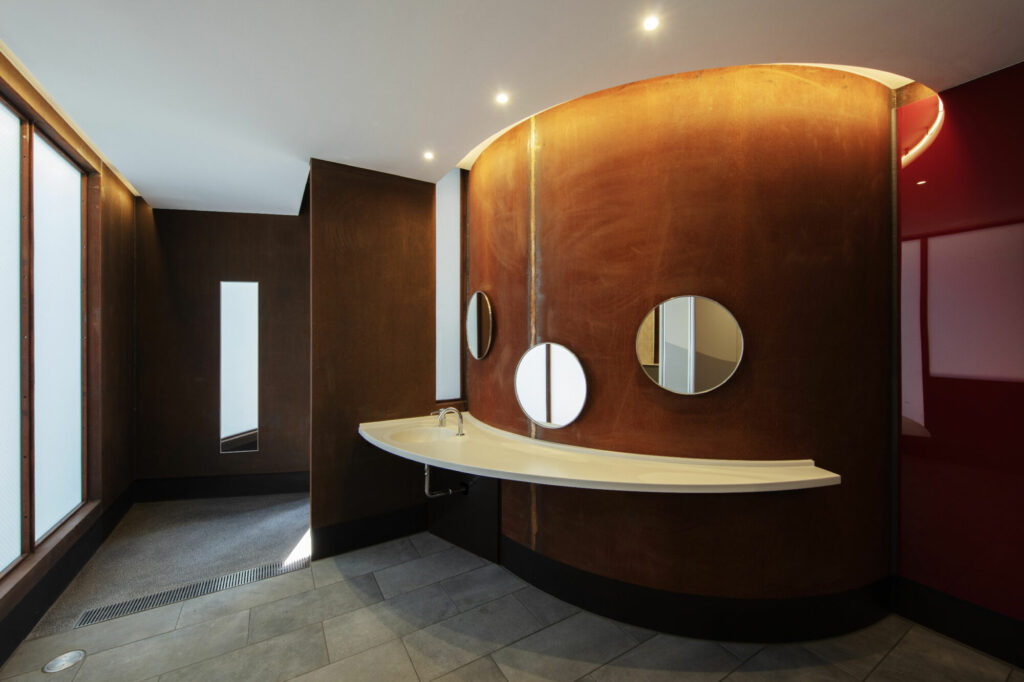
A large yellow oval awning covers a row of varying-height cylindrical toilets, with rabbit silhouettes visible through the round windows set into the outside walls. Because of site-specific requirements for lightweight construction, the designer chose to build the facility using a steel plate panel structure that is resistant to weather.
In order to remove the sensation of darkness and closure from the region beneath the elevated railway tracks of the Keio Line, she also made the wide awning hang overhead, forming a sky-like opening. The panels of weather-resistant steel plate have undergone rusting, which ensures that their strength and texture will last forever.
The goal was to design a public restroom that exudes a lively atmosphere while maintaining a commanding presence akin to that of a resolute elderly man watching over the populace. The facility has a large, open feel due to its wide entryway, and its inside is safe, secure, and well-kept.
Nishisando
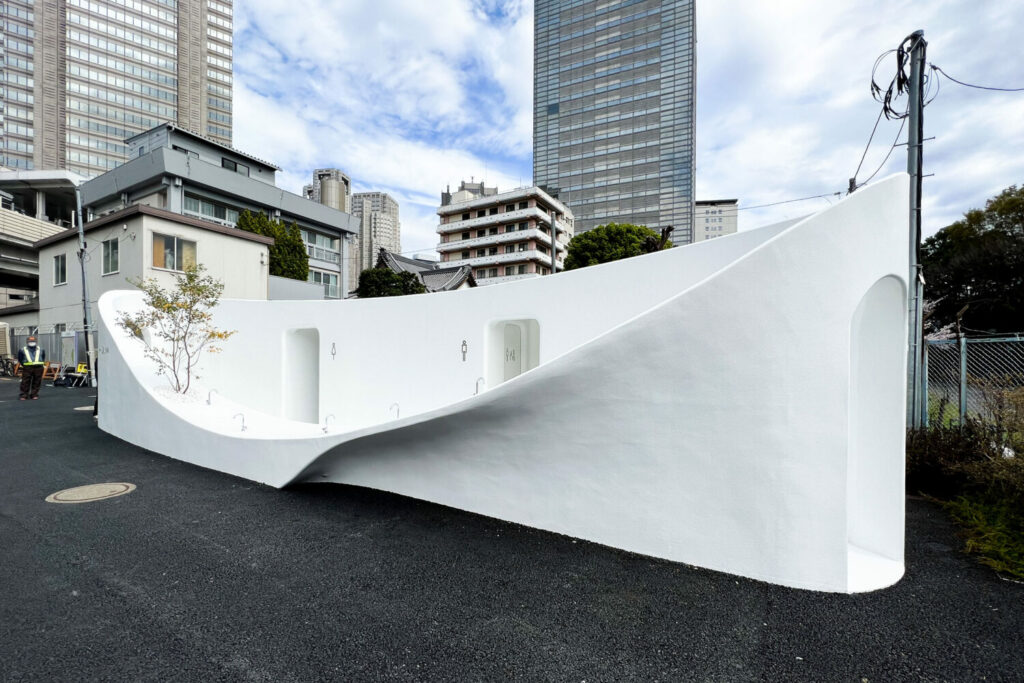
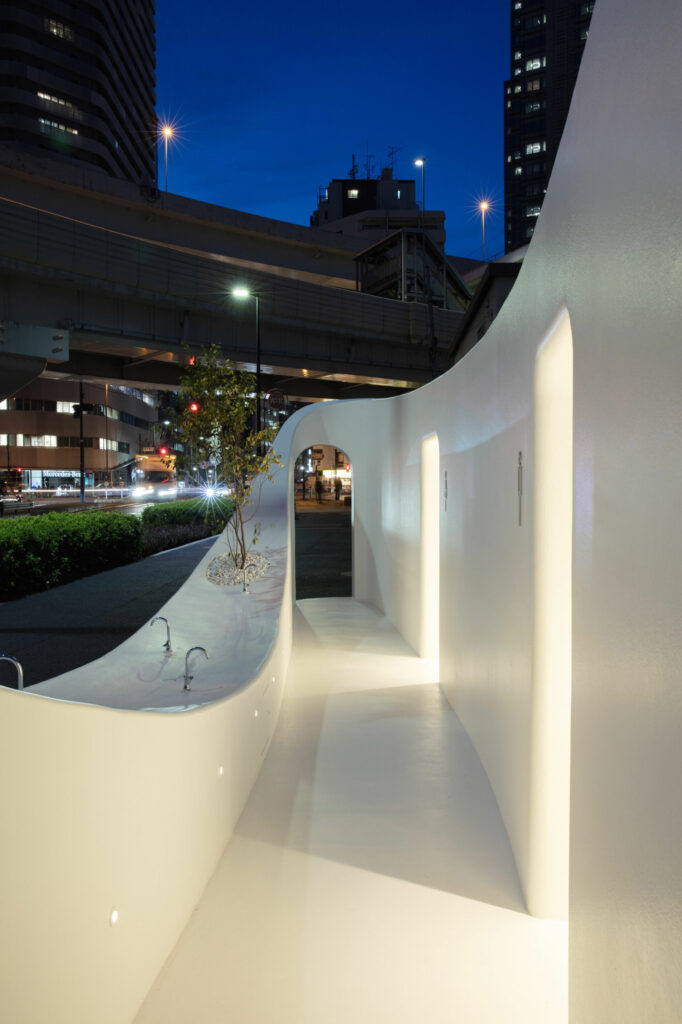
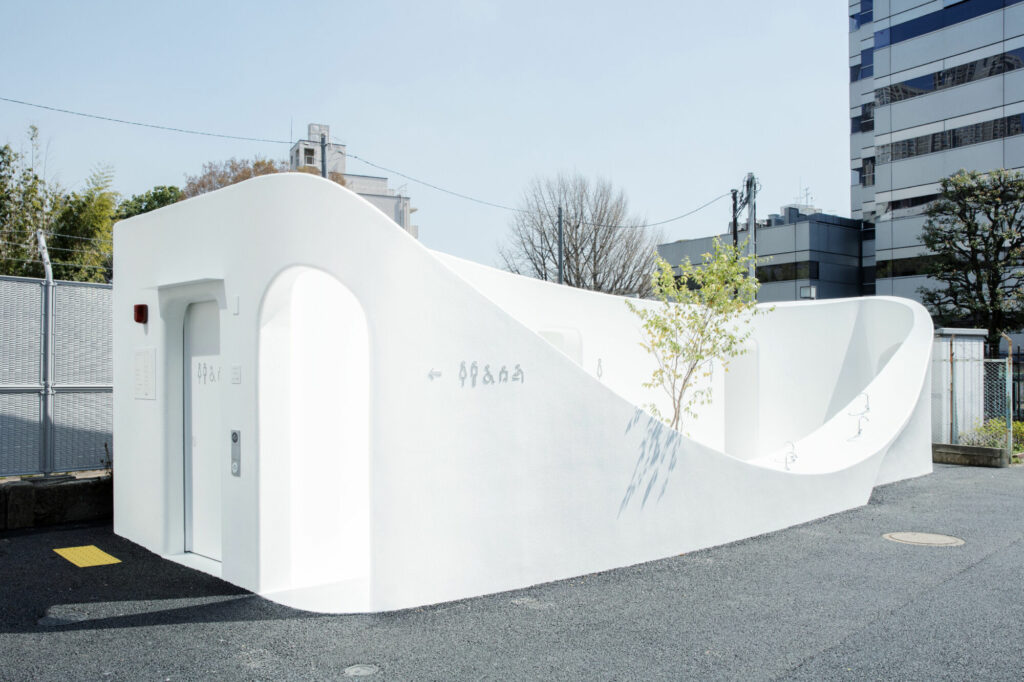
A public restroom serves as a city fountain or urban watering place. The designer suggests creating a public hand-washing station that is accessible to a broad range of individuals for various uses in addition to restroom users. The toilet functions as a single, spacious vessel that is available to everyone.
Handwashing stations at different heights have given the building its distinctive design, which includes a big concave center. It is meant to establish a small community where everyone, young and old, congregates around the container to wash their hands, sip water, and converse. The proposal is to create a novel kind of public area where people may congregate and converse near water.
Urasando
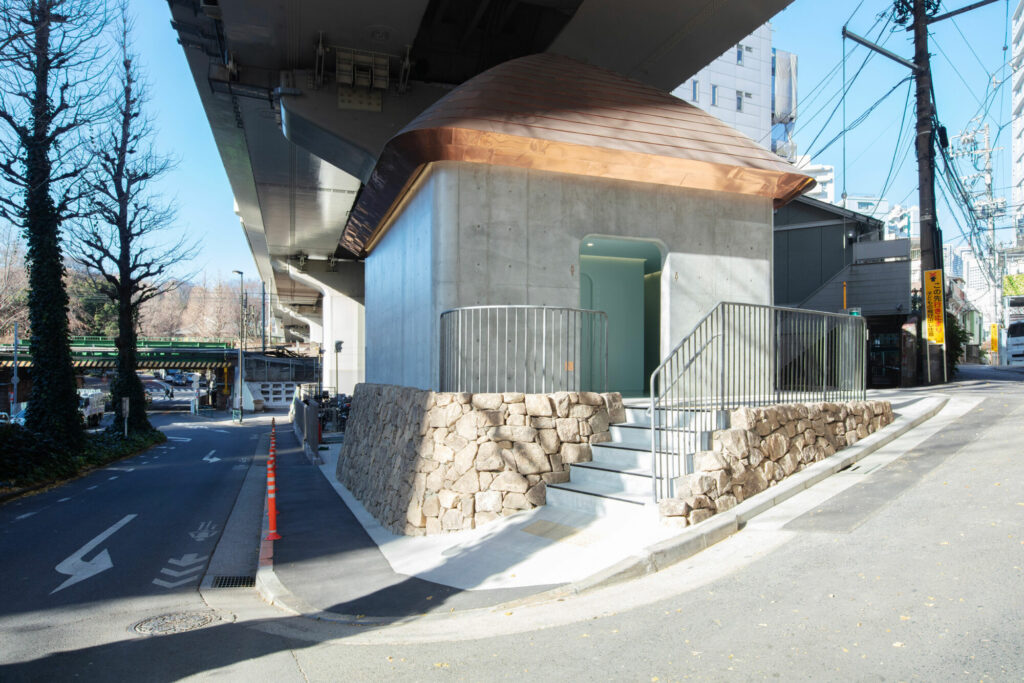
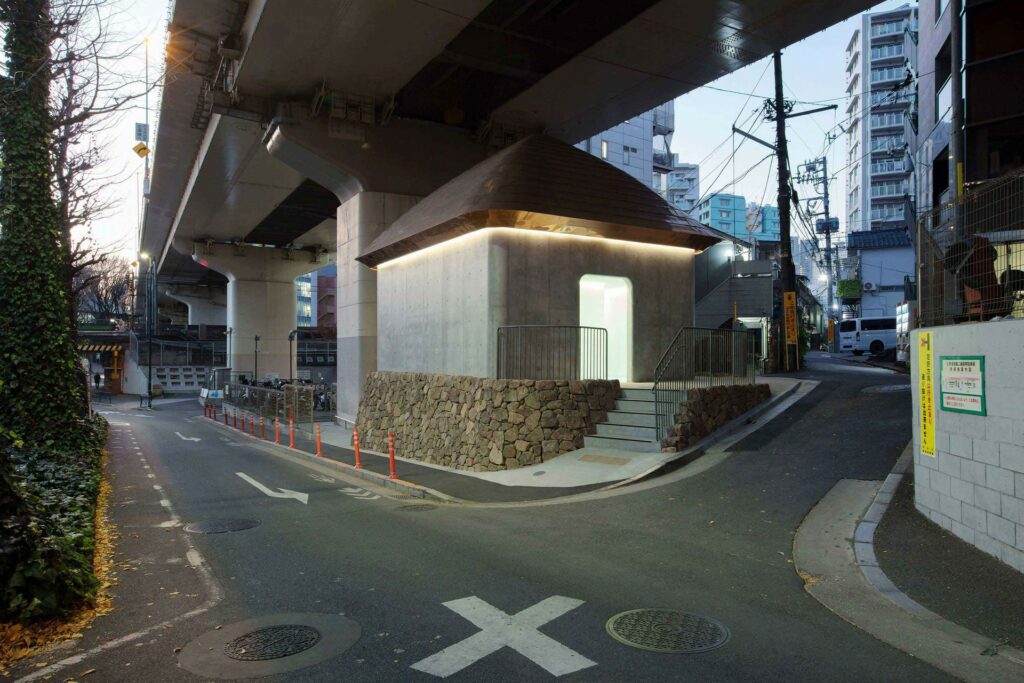
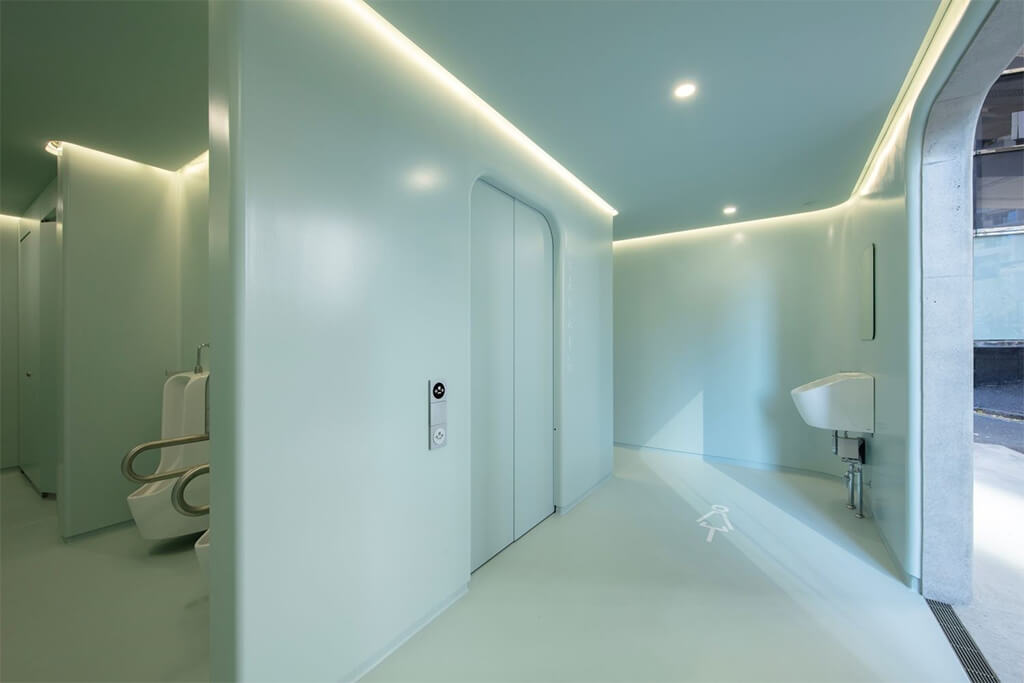
The copper Minoko roof and other elements of traditional Japanese architecture are central to the design. The roof form, which is frequently found in tearooms, temples, shrines, and rural locations, evokes a subliminal sense of serenity and comfort despite its bustling, hypermodern setting. Over time, the structure will become a part of Tokyo’s urban fabric thanks to the patina on the copper pyramidic roof.
The toilet has to feel honest and reliable from the inside out. Its light interior is expertly and hygienically completed in a monochromatic shade of green. For the toilet, the design prioritizes longevity, ease of use, and the creation of a warm, welcoming environment.
Like the numerous hidden gems in the city, the toilet becomes something magical as well as immensely helpful to find in Shibuya.
Hiroo Higashi Park
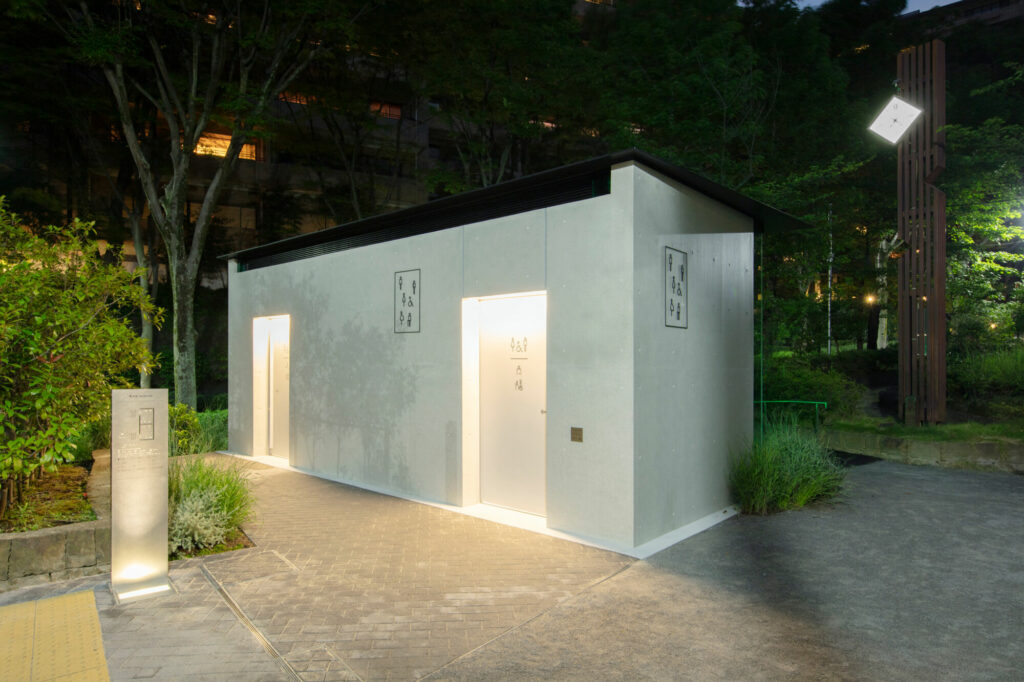
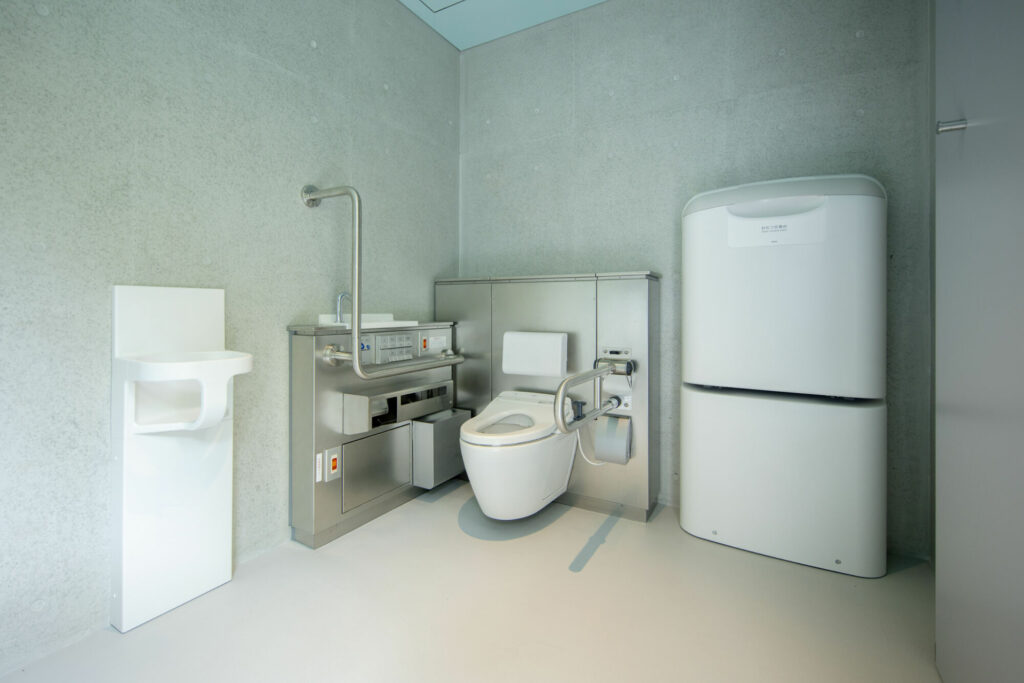
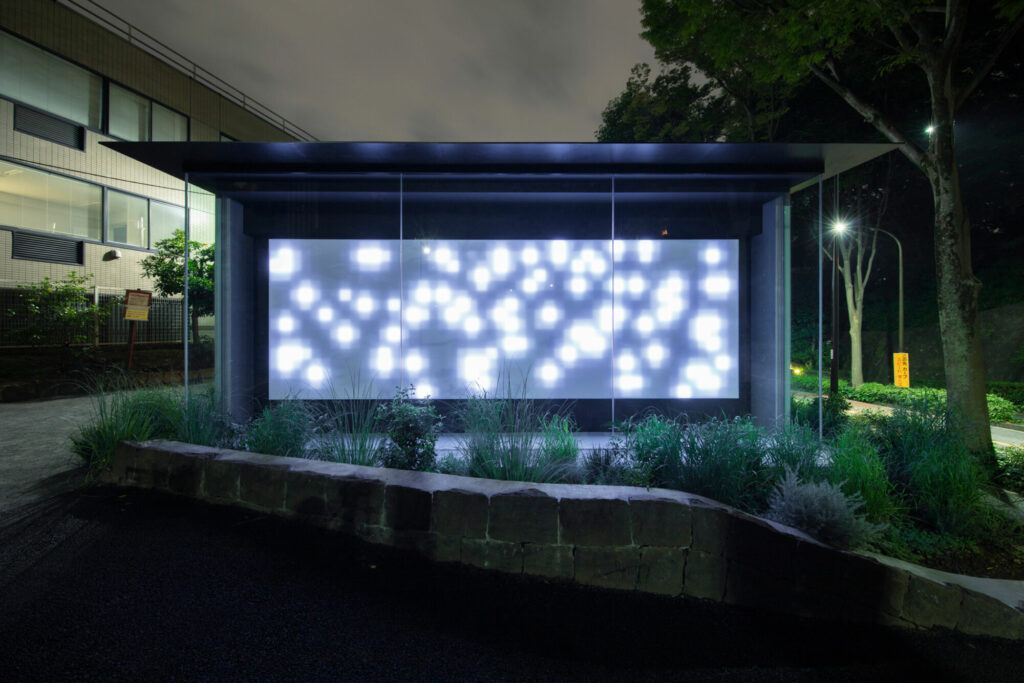
The basic concept for this project, according to its designer, is “we are all the same in the sense that we are all different.” This is what he intended to capture in the design of a public restroom. In addition to being clean, safe, and secure, he also wanted his facility to be simple for everyone to use. He created this toilet to be like a piece of public art that is a part of everyday life and always poses questions to the observer because it is located inside a park, surrounded by greenery, and is visited by many locals and guests.
He hopes it turns into a monument that raises more questions about the project’s importance. Seventy-nine billion is the number of ways that the toilet can light up the globe. You will never see the same pattern twice since it keeps shining in various patterns, such as light streaming through the trees in the daytime and moonlight or roving fireflies at night.

